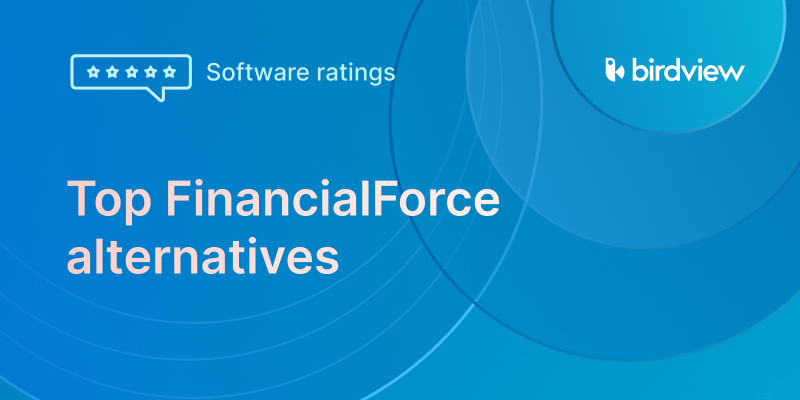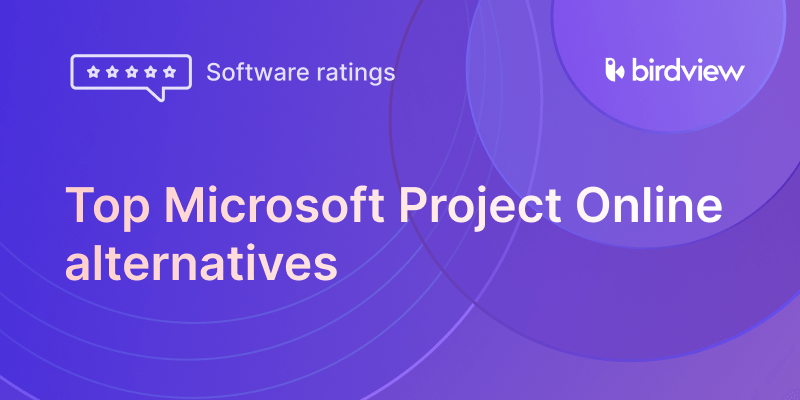Let‘s be honest–“resource management” doesn‘t sound very exciting. It‘s not as flashy as AI or digital transformation. But if you‘ve ever double-booked your top engineer, run out of design hours before a deadline, or realized mid-project that half your team is on vacation... you know exactly how important it is.
Why resource management deserves more respect than it gets
Resource management is the unsung hero of successful project delivery. When neglected, the consequences are real. According to Wellingtone’s State of Project Management 2025 report, only 38% of organizations mostly or always complete projects on time, and just 39% deliver the full intended benefits.
In this guide, we‘ll break it all down in plain English:
✓ What resource management actually is
✓ Why it matters (especially if you work in services)
✓ How to do it better
✓ Which tools–like Birdview PSA–can help
Think of this as your guide to less chaos, happier teams, and smarter project delivery. Let‘s dive in.
What is resource management?
Resource management is the practice of planning, allocating, and overseeing the use of people, tools, time, and budget needed to complete projects and support daily operations.
Put simply, resource management in project management is how you make sure your team has the right support at the right time–without overloading or underutilizing anyone.
This applies to all industries but is especially important for service businesses like MSPs, consulting firms, creative agencies, and engineering companies. For these teams, people are the main resource–and how you manage their time directly impacts your delivery capacity and profitability.

✓ Who‘s available for next week‘s cloud migration?
✓ Can our lead engineer handle the security audit, or is she fully booked?
✓ Do we need to hire a new PM before onboarding those new clients?

Effective resource management for service organizations: why it matters
In project-driven industries like engineering, business consulting, and IT services, effective resource management isn‘t optional–it‘s a competitive necessity. Your ability to plan, assign, and balance workloads directly impacts profit margins, timelines, and client satisfaction.
For example, in a consulting firm, overbooking a senior advisor across too many clients can reduce impact–and risk burning out top talent. In IT services, mismanaging technician schedules during a cloud migration can mean missed SLAs and costly downtime.
With smart resource planning, you avoid these risks. You know who‘s available, what‘s next, and when to adjust or hire–keeping projects on track and teams productive.
To do this well, you need the right tools. Here are the core features every modern resource management system should have:
9 must-have features for project resource planning
To manage people and workloads successfully–especially across multiple projects–you need the right capabilities. Below are the essential features any modern resource management software should include:
1. Centralized Resource Calendar. Provides a clear, shared view of team availability, assignments, and workloads across all projects. Helps avoid double-booking and underutilization.
2. Capacity Planning and Forecasting. Lets you compare current workload with resource availability and plan for the future–weeks or even months ahead. Supports smarter hiring and realistic commitments.
3. Skills Tracking and Tagging. Allows you to filter and assign resources based on certifications, expertise, or roles. Ensures work is matched to the right people–not just whoever‘s available.
4. Utilization Reporting. Tracks how much time employees spend on billable vs. non-billable work. Helps you identify overuse, underuse, and improve overall productivity.
5. Drag-and-Drop Scheduling. Makes it easy to shift assignments, adjust start dates, or reallocate team members–all within a visual interface that updates in real time.
6. Scenario Planning (“What-If” Modeling). Simulate potential changes (like a new client or key person leaving) to see how your team‘s capacity would be impacted. This supports better long-term decision-making.
7. Automated Workflows. Automatically assign resources based on project type, department, or client tier. Reduces repetitive manual planning and speeds up execution.
8. Gantt Charts. Visualize project timelines, dependencies, and milestones in a single timeline view. Gantt charts are ideal for long-term planning and resource alignment across phases.
9. Kanban Boards. Track individual tasks and workloads with a visual board that shows status, owners, and priorities. Great for real-time team collaboration and agile workflows.
The business benefits of effective resource management
Getting resource management right doesn‘t just make your projects easier to manage–it gives your business a measurable competitive edge. Below are the key benefits that show up when you implement resource management practices consistently.
☑️ Higher Efficiency. You know who‘s doing what and when, so tasks get completed faster with less friction. That means fewer delays, less rework, and smoother handoffs between team members.
☑️ Happier Teams. When workloads are balanced, your team is more productive–and less stressed. No one enjoys being overworked or sitting idle. Effective planning creates sustainable schedules and better morale.
☑️ Better Forecasting. With visibility into upcoming projects and availability, you can plan future hiring, adjust delivery dates, and make smarter promises to clients.
☑️ Improved Profitability. Accurate tracking of billable and non-billable hours helps you reduce waste and maximize your margins. You stop losing money on poor estimates or overstaffed jobs.
☑️ Stronger Client Relationships. Projects that are delivered on time and within scope build trust. Happy clients come back–and bring referrals with them.
☑️ Easier Scaling. If you want to grow your business, you need a system that scales with it. Good resource management lets you expand without losing control or burning out your staff.
💡 Modern PSA tools like Birdview PSA make all of this easier by centralizing visibility and enabling faster, smarter decisions across every project and resource.
The most common resource management challenges
Even high-performing companies struggle with resource management. Here are some of the most common pain points that derail teams:







💡 The solution? A combination of clear processes and centralized, purpose-built tools–like Birdview
The answer depends on your company‘s size, structure, and how you deliver work. But no matter the setup, someone needs to be clearly accountable.
In Small Teams or Agencies.
The responsibility often falls to the project manager or team lead. They handle project timelines and assign tasks based on what they know about team availability.
In Mid-Sized Organizations.
You might have a dedicated resource or traffic manager. This person oversees allocations across projects, balances workloads, and helps forecast capacity needs.
In Larger Enterprises.
A Project Management Office (PMO) usually takes ownership. The PMO standardizes processes, monitors utilization, and aligns staffing with strategic goals across the entire organization.
Regardless of who “owns” resource management, it should never be siloed. It requires close collaboration between:
✔️ Project managers
✔️ Department leads
✔️ HR or talent teams
✔️ Sales (for forecasting upcoming demand)
💡 Tools like Birdview PSA make this cross-functional planning easier by giving everyone–from executives to project leads–a shared, real-time view of team capacity and project needs.
How to measure the success of resource management
You can‘t improve what you don‘t measure. That‘s why tracking the right KPIs (Key Performance Indicators) is essential for understanding how well your resource management efforts are working–and where to improve.
Here are some of the most important metrics to monitor:
Utilization Rate
How much of each employee‘s available time is spent on billable or high-priority work?
💡 For example, if someone works 40 hours a week and 32 are billable, their utilization is 80%. That‘s a healthy benchmark in most service-based businesses.
Planned vs. Actual Hours
How accurate are your project estimates? Are teams regularly going over (or under) the projected effort?
💡 Consistent overruns may point to poor scoping, while large underaged may indicate overstaffing or inefficiency.
Resource Conflict Frequency
How often do you double-book people or pull them off one project to help with another?
💡 High conflict rates are a sign of poor visibility or unrealistic planning. Better forecasting helps reduce fire drills.
Time to Staff New Projects
How quickly can you assign the right people when a new project is approved?
✅ Delays here slow down delivery and frustrate clients. A centralized tool like Birdview PSA accelerates this process with live availability data.
Employee Satisfaction
Are team members frequently overbooked or left idle?
✅ Pulse surveys and feedback loops help you spot warning signs early and adjust workloads to maintain morale.
Project Delivery Metrics
Are your projects delivered on time and within budget? Do clients walk away satisfied?
✅ These final outcomes are often the clearest reflection of how well you‘ve managed your resources.
💡 Bonus: Most of these KPIs can be tracked and visualized automatically using Birdview PSA dashboards.
Best practices for effective resource management
Even the best software won‘t help if your team doesn‘t embrace consistent practices. Building a strong resource management culture means creating habits and systems that support clarity, fairness, and accountability–without slowing people down.
Here are practical best practices that work across industries:
Hold Weekly Resource Review Meetings. Check in regularly to review capacity, upcoming work, and staffing changes. This helps you catch overloads before they happen and respond to shifting priorities quickly.
Set Realistic Utilization Targets. Don‘t aim for 100% booked time–it‘s not sustainable. Most healthy teams operate best around 70–80% utilization. Leave room for training, meetings, and unexpected tasks.
Encourage Two-Way Feedback. Ask team members how they feel about their workload. Are they overwhelmed? Bored? Feedback helps managers adjust planning in real time.
Define and Document Roles and Responsibilities. Clearly define who does what, and how much time they‘re expected to spend on each type of work. This prevents assumptions and avoids conflict.
Bridge the Gap Between Sales and Delivery. If sales is promising fast timelines or custom work, delivery needs to be involved early. Better alignment means smoother resourcing and fewer surprises mid-project.
Use Visual Planning Tools. Gantt charts, resource heatmaps, and dashboards give everyone a clearer view of what‘s happening. Birdview PSA includes built-in visual tools that simplify planning and decision-making.
Build a Skills Matrix. Know who‘s trained on what. A searchable skills matrix helps assign the right person to the right job–and makes upskilling easier to plan.
These habits, when embedded into team workflows, turn resource planning from a guessing game into a strategic advantage.
Resource management software: your secret weapon for clarity and control
Let‘s be honest–managing people, schedules, and workloads across multiple projects is nearly impossible without the right tools. That‘s where resource management software comes in.
These platforms help you plan, assign, and track resources in one place. No more chasing updates in spreadsheets or guessing who’s overloaded. With good software, you get visibility into your entire team‘s availability, workload, and skills–all in real time.
For example, instead of manually figuring out who can take on a new client project, your software shows you exactly who‘s free next week and who‘s already at 90% capacity. You can reassign work in a few clicks. And if someone‘s out sick, you‘ll know immediately who can cover.
Tools like Birdview PSA go a step further, combining resource planning with project timelines, time tracking, and forecasting. That means fewer surprises, better use of your team, and smoother delivery–every time.
If you‘re managing more than a few projects at once, resource management software isn‘t optional. It‘s essential.
Resource management in project portfolio management
In project portfolio management (PPM), resource management plays a critical role in aligning people, skills, and time with strategic priorities. It‘s not just about staffing individual projects–it‘s about seeing the big picture and making sure resources are distributed wisely across the entire portfolio.
For example, when multiple projects compete for the same engineers or consultants, resource management helps you prioritize based on deadlines, business value, or client commitments. It also helps prevent overallocation by giving leadership a real-time view of who is overbooked, underutilized, or available to take on more work.
Effective portfolio-level resource planning ensures that your most valuable talent is assigned where they‘ll have the biggest impact.
With tools like Birdview PSA, project managers and PMOs can monitor resource allocation across portfolios, adjust in real time, and make strategic decisions with confidence.
How Birdview PSA simplifies resource management across your organization
Managing people, time, and workloads across multiple projects can be overwhelming–especially for growing service-based teams. That‘s where Birdview PSA steps in. It brings structure, visibility, and real-time data into your resource management process, making it easier to plan, assign, and optimize your most valuable assets: your people.
Centralized Resource Planning
Birdview PSA gives you one unified view of all project and resource data. No more guessing who‘s available or relying on spreadsheets. You can see current workloads, upcoming availability, and overlapping assignments at a glance.
Smarter Allocation and Forecasting
With Birdview, you can assign work based on real availability and skill sets. Use forecasting tools to predict future needs and plan capacity weeks or months ahead–so you never overcommit your team or turn down high-value work.
Real-Time Utilization Insights
Built-in dashboards and reports show how team members are spending their time. You can quickly identify underused staff, spot overloads, and adjust workloads with just a few clicks.
Whether you’re managing five projects or fifty, Birdview PSA helps you align your people with the right work–so you deliver better, faster, and with less stress.
Final thoughts: make resource management a competitive advantage
Managing resources well isn‘t just about getting projects done. It‘s about building a sustainable, scalable, and profitable business. When you have the visibility to plan ahead, the confidence to allocate wisely, and the flexibility to adjust on the fly, your entire organization runs more smoothly.
Start small–build consistent habits, improve visibility, and make better decisions with data. As your team grows, these foundations will help you avoid burnout, reduce rework, and deliver stronger results across every project.
Tools like Birdview PSA can help you bring all of this together in one place. From capacity forecasting and skill-based allocation to real-time tracking and scenario planning, it‘s a single platform designed to simplify resource management for service teams.
Whether you‘re an MSP, agency, or consulting firm, now‘s the time to take control of your resources–and turn them into your biggest advantage.
Ready to streamline resource management?
or
You may be interested in…
Capacity Forecasting: How Do You Forecast Your Team’s Capacity?
Types of Resources in Project Management: A Detailed Guide
Capacity Requirement Planning (CRP): Process & Tools
Top 10 Resource Management Tools 2025
Resource Management FAQs
1. What is resource management in project management?
Resource management is the process of planning, allocating, and monitoring resources–such as people, time, tools, and budget–to ensure projects are delivered efficiently and on time.
2. Why is resource management important?
It helps avoid overallocation and underutilization, keeps workloads balanced, maximizes team productivity, and ensures optimal use of available skills and tools.
3. What types of resources need to be managed?
Resources include human resources (employees, contractors), physical assets (equipment, software), financial budgets, and time.
4. How does Birdview PSA help with resource management?
Birdview PSA offers features like workload balancing, capacity planning, skills matching, and real-time availability tracking to help you assign the right people to the right tasks at the right time.
5. What is capacity planning, and how does it relate to resource management?
Capacity planning ensures you have enough resources available to meet current and future project demands. It‘s a proactive approach to avoiding bottlenecks and burnout.
6. How can I avoid resource conflicts across multiple projects?
Use a centralized resource calendar or PSA tool like Birdview to get a complete view of team availability and avoid double-booking or overloading team members.
7. What‘s the difference between resource planning and resource scheduling?
Resource planning is about identifying what resources are needed and when, while resource scheduling involves assigning those resources to specific tasks or time slots.
8. How do I track resource utilization?
Birdview PSA provides dashboards and reports that show actual vs. planned utilization, making it easy to spot inefficiencies and adjust workloads in real time.
9. Can I manage remote or hybrid teams with a resource management tool?
Yes. Tools like Birdview PSA are built to support distributed teams, giving visibility into everyone’s availability, workload, and progress–regardless of location.
10. How often should I review my resource allocation?
Ideally, review it weekly or whenever a project‘s scope changes to ensure priorities are aligned and resources are optimally distributed.



